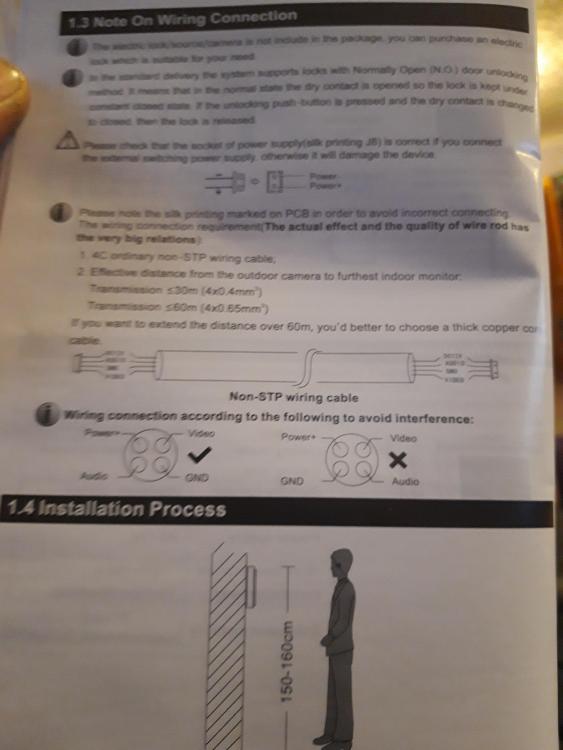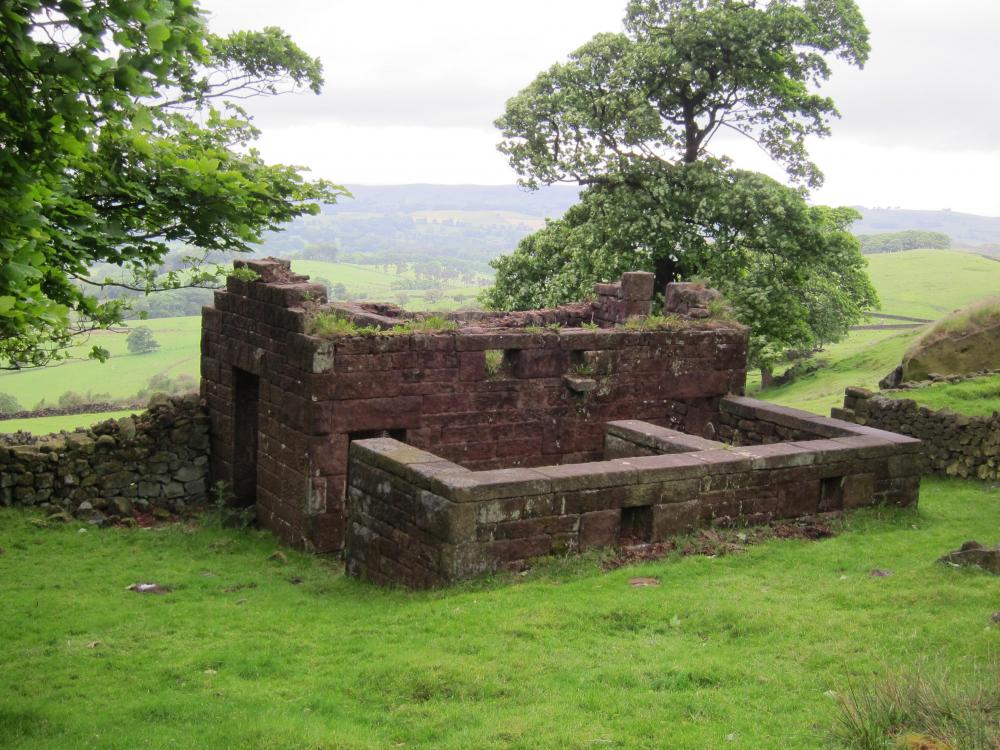Leaderboard
Popular Content
Showing content with the highest reputation on 09/20/19 in all areas
-
Painting commenced on 6th March and was finished about two weeks ago. I heavily underestimated the time this would take. By about 4 months. White everywhere so it was hard to tell where we were at after the first two coats. Our favourite whiteboard "spreadsheet" tracked progress and filling it in gave great joy.2 points
-
Hi @JSHarris Thanks for the effort. I couldn't wait and just sat on the misses windows pc(? Got the Stroma free version going. Took me 25min to get th hang of it and another 45 to punch in all the data. Got all the results out and saved another 200-600£(depending on who you ask). Works amazing. Just Windows gave me cold showers. How can people work with that? ?2 points
-
@colin7777 +1 for doing the Building Regs yourself . I would retrospectively do this and didnt find the 739 amendments I have done myself to the (rubbish) plans submitted by my architect too difficult. Fair bit of reading and time consuming , yes, but not difficult. Different Topic: I watched this verbal battle between @Sensus and @JSHarris over the last weeks in all the topics when they clash, and their opinions always seem to clash. For the Forum s entertainment, I would like to suggest a fair match of Chessboxing between the 2 of you. On Neutral Grounds somewhere in Birmingham . ?2 points
-
I doubt there's a single member here who hates trained professionals. I don't doubt that many feel some professionals could do with acting a little more, well, professional.2 points
-
Hi - I am a first time self-builder - now the owner of a small garden plot in an edge of village location. We have detailed planning permission for a 3 bed house, designed on "Passivhaus principles". Aiming to start on site early next year (2020)1 point
-
Hello to everybody at Build-Hub. I am hoping to purchase an asymmetric chalet type building. Bungalow with dormer windows (gabled hopefully) and upstairs rooms or a one and a half story house if that makes more sense. I suppose the age of the building might be from the 1920’s- 1930’s onwards. I am seeking a building that need modernisation, restoration with a large plot and hopefully quite isolated. Wales, Cornwall, Devon are the preferred destinations, we don’t fancy moving north of Worcestershire. The plan is to use the money saved by buying a worn property on refurbishing and re-modelling the building into a more classical shape. I am a great fan of Edwin Lutyens, pebbledash, buttresses, overhanging and decorated eaves and gables, use of stone and tile facings etc. Arts and Crafts style type architecture. Somewhere out there, there will be the house for us, it’s just a matter of finding it. Unfortunately, it is now a growing trend to demolish the scenario we are seeking to make way for multiple modern housing units. If I can be of any assistance to anybody, please just ask. I have 35 years’ experience in the conservation, repair and restoration of some of the country’s finest monuments and buildings. I was described by senior personal of English Heritage as being one of the country’s finest Stonemasons. There is very little I do not know about stonework and masonry generally and I have been and advisor to both EH and the National Trust. Apart from writing the specifications and reports for the restoration of ancient and important buildings, I have obtained Listed Building Consents for many private customers and clients over the years. Anyway, nice to meet you- Steve.1 point
-
Point of principle, really, at least as far as I'm concerned. In my case, it has little to do with whether it's cheaper to get someone else to do something, it has everything to do with the view that was embedded into me when I was a small boy: "Never pay anyone to do something that you can learn to do yourself" One of the greatest failings in our society is that we are gradually losing the confidence to do things that we are perfectly capable of doing, with a little bit of effort and application. Self-build is a perfect opportunity for those that wish, to spend some time learning and perfecting new skills. There isn't much in life so rewarding as looking back at something and knowing that it was your own efforts that made it happen. There's nowhere near the same sense of achievement from just paying someone else to do something.1 point
-
Does this video help? Youtube is excellent for working out most Velux stuff (compared with the Velux instructions which are not very helpful as a checklist once you know what to do and give no clue at all if you don't).1 point
-
1 point
-
When I was in the Peak District I came across this amazing ruin, this was just the piggery the main house ruins were to the right. It’s not often i fall in love with a place but this really was something very special. No habitable building anywhere nearby, just completely deserted and remote. If I had wanted to live in this area I would have moved heaven and earth to see if it was possible to get it !1 point
-
I'll have a dig around, as when I first started looking at this, years ago now, I took the BRE worksheet and translated it to an Excel worksheet. Not anywhere near as easy to use, and it doesn't do any self-checking for valid values, plus it would have the figures in for a much older version of SAP, but I may still have it somewhere. Might take me some time to find it though, as it's around ten years old, so probably archived away from about three machines ago. I'll leave myself a note on my desk to see if I can find it and update it, and get back to you. Alternatively, I think that BRE may still have the basic worksheet somewhere on their site, and you can take that and just convert it to run in whatever spreadsheet package you're most comfortable with.1 point
-
Yup.... it’s something I have to think about all the tine living on an island and hosting guests, i keep it as simple as possible as there will be no quick fix if something goes wrong.1 point
-
1 point
-
Two different builders that ive spoken to in the last few weeks have both mentioned the site.. i think the second builder mentioned it when I asked him about Interstitial condensation ?1 point
-
What interested me in in this weeks GD, is the design the actual user came up with for his wet room, did not look to me to meet Scottish Building regs for an "accessible bathroom" with regards to activity spaces and circulation spaces. Clearly it DOES meed his needs and enables him to get from his chair to the various appliances so it suggests to me, building regs requirements that are imposed on us, may not be that well thought out and may not be what a disabled user actually needs.1 point
-
My friend reminded me that sometimes really small changes, that would seem to be of no consequence to an able bodied person, can make all the difference between being able to access an area or not. A point in question was that issue of the spacing of the toilet away from the wall. Building regs requires that the side of an accessible toilet, with oblique access, must be at least 400mm from the centreline of the toilet to the nearest wall. I moved ours over by 50mm, as that then makes all the difference between being easily able to use the adjacent wall for support well and not. Seems a small change, just 50mm, but as my friend said at the time, small changes make a huge difference, not just physically, but also in terms of confidence. Accessibility is as much about the person feeling secure through any manoeuvre as it is about providing enough space, handholds etc. Steve's classic demonstration of that is in the pub. He will don leg irons, lock them at the knee, and use crutches to get around and stand at the bar, His reason for doing this is entirely practical, even though it's a bit uncomfortable. Standing on leg irons at the bar people don't accidentally spill beer over him, something that apparently happens all the time if he stays sat in his chair. His perennial joke is that he's the only one of us who won't fall over when pissed, as he's had decades to get used to being legless...1 point
-
Not that much larger, on average. Just under 8 m at Weston-Super-Mare today. They work because they are very large. The proposed Severn Estuary barrage would make a lagoon 500 km2, this would give a power range between 8W/m2 (neap tide) and 30W/m2 (spring tide). Cheaper and more effective to put PV and battery storage somewhere.1 point
-
Very nice work, I felt an immediate sense of calm just looking at those pictures. Ancient paths and pathways are a wonderful part of our ancient narrative. I think there are a few ancient stone bridges in Cornwall, or pathways, or stones crossing various rivers at various paces. Wonderful stuff, thanks for sharing!1 point
-
That's without any foundation in fact, I think you've decided to just makes stuff up for reasons best known to yourself. Not the first time you're made grossly false assumptions about me, or my motives, either, it's getting to be a habit of yours, for reasons I'm wholly unaware of. I've nothing against anyone, least of all architects, and have written here, several times, that I felt that having an architect's input into our design would have been helpful. I have always done precisely the opposite of placing "blind faith in delegated responsibility". I resigned as head of UK marine radio, radar and nav aid type approval on a point of principle over this very aspect of the way EU regulation was changing the way that critical equipment approval was being allowed with no proper independent inspection. I do accept that this is the way that things work though, much as I may despair of it as a process. I described the process I used, in good faith. It was valid, accepted and fell well within the rules under which building control bodies are required to operate. I checked carefully to make sure that what I was submitting was most probably what was needed, and have shared everything, warts and all, in the hope that it may be of use to others. I provided no guarantee that what I did was a universal panacea, just put it forward that it is perfectly possible for someone with zero experience of the system to do some homework on what is required and manage it themselves, so saving some money, if they wish. Ultimately, this is a "self-build" forum, with an inherent implication in that term that "self" means doing stuff oneself. I very strongly believe that we should encourage people to do as much work themselves as they feel comfortable with, and provide information to help them make a choice as to which approach to take when facing any particular challenge. I am not going to sit here and suggest that someone must always use a professional service for everything, when I know full well that there are plenty of tasks that can be done on a DIY basis if the person is prepared to learn new skills and apply them.1 point
-
Just fibres, no rebar. There was some confusing advice offered in prior threads on this forum, my advise is that if the concrete slab needs extra strength hen rebar is the solution. Metal fibres are a fringe solution and not applicable in a garage floor slab, plastic fibres offer marginal reinforcement with perhaps some resistance to surface cracking. In the end other factors nudged me towards a thicker than usual floor slab, the pour was about 80% thicker than standard.1 point
-
Depends on time. A mouse might be able to muster enough power to move this mass over a few lifetimes, an elephant would do it a lot quicker, as it's more powerful. If we assume that there is 12 hours to lift the 5,000 tonne mass 8 m, and that the rate of lift is constant (it won't be for a tide, but this keeps things simpler) then the potential energy needed to achieve this is given by Work done = 5,000,000 kg * 9.80665 m/s² * 8m = 392,266,000 J Power over that 12 hour period = 392,266,000 J / (12 * 60 * 60) = 9,080.23 W So very roughly, ignoring efficiency, the potential energy is about 392.266 MJ and the power over 12 hours would be about 9.08 kW. Allowing for 70% efficiency, the mean power generated would be around 6.356 kW.1 point
-
The really massive problem with tidal power, is that although we have locations where there is the potential for a lot of power generation, like the Severn Estuary, the interests of those keen on exploiting this large energy source have to be balanced against the interests of those keen to retain both shipping access and important tidal habitats. The same goes for other areas where there is a high tidal range that could be exploited. The act of removing energy from a tidal stream has a direct and massive impact on the local environment somewhere - it's impossible to extract energy without that loss of energy appearing as an effect somewhere. Even putting solar panels on the roof of a house reduces the heat into the house by ~20%, which then impacts on things that may grow on those surfaces, by altering the mean temperature range. Arguing over the relative balance between the positive aspects of electricity generation, and the negative aspects of it is made all the more difficult because there are often somewhat irrational, but nonetheless strongly held, belief systems that come into play. The same people that get sufficiently irate to mount mass protests about electricity generation schemes are often the same ones that rely on the massive amount of electricity it takes to maintain the internet (currently the internet has an electricity demand that exceeds that of the UK as a whole, by a factor of about 8 to 10).1 point
-
Our basement was mostly in river gravel on chalk so equally well draining, water table 2m below us. In addition to the Sika concrete, we put a land drain at the foot of the slab, draining to a soakaway, and backfilled the 1m working gap with clean, fist sized, stone - essentially building a giant french drain. We have a section of concrete that forms the box for the external basement stairs and it is in standard concrete as it's exposed to the elements and is decoupled from the basement structure itself so i can compare the pricing. Looking at the pricing we got in 2015, the Sika concrete had a supply & place cost of £200/m3 compared to the standard which was £120/m3 - this includes all the labour costs for the pour etc so in our case it was about 60% more but that includes all the tapes, mastic, plugs, prep & Sika inspections etc. There's also contractor margin in those prices too.1 point
-
1 point
-
Bit strong surely. Don't we all have enough to do? With respect @JSHarris you might have found it easy to prepare all the technical details and sap but for us mortals it's harder than you make it seem! I prefer to send the technicians drawings back to him constantly for revisions. Think I've made it to revision G before now!1 point
-
1 point
-
Two Welsh bathroom experts now is it? Oh Oh woah I just know that something good is going to happen... Erm...I mean welcome.1 point
-
Us folk working behind the scenes are always interested in how members come to find the forum. Most would be via a Google search when they are looking for a solution to a certain building related issue but you are implying word of mouth. Could you expand on that? Oh and welcome.1 point
-
No problem at all mate, I'm not here to tout for work, there's plenty of work out there, if anyone would need any advice in my particular trade then I'm always happy to help, and vice versa, as like I've said, been told there's some good advice on here1 point
-
1 point
-
1 point
-
They do try and bully you into adding water nearly had an argument on last job. Was being pumped as well. I'm sure less reputable firms do it because they know their mix probably isn't up to scratch anyway, so they want you to add water so you sign the disclaimer.1 point
-
Yes and it is a crazy price once you have a special mix. Even more if you want it signed off by Sika or whoever. I would say voids and honeycombing are more of a risk as normal concrete, especially if it has a low water:cement ratio, is fairly waterproof anyway. For quality concrete, specify correctly, don't let the pump guy or concrete lorry driver bully you into adding water and let the batching plant know you will be doing cube tests.1 point
-
i take it you ae going for plasterboard ingoes at the top and sides? the biggest problem with MDF is that you will have to fill and sand the end as it will show, i have gone for oak, but my skirtings, facings and doors are all oak so it makes sence, i think all white would be too much but thats personal prefference, why not go for a contrast rather than rying to match the windows1 point
-
If the delay is due to understaffing, then the LA are expecting the end customer to take the hit - which is not on for a paid service. Until they see some pain (refunded fees) where is the motivation to improve the situation. When I worked as a grad SW developer, we were dependent on a US team completing their base work before we could build on top. Every release, the US team would release their code 2-3 weeks after the agreed date which screwed our schedule so we would work evenings, weekends and cancel holiday and training to keep to our dates. We were not allowed to add a 'late handover' buffer as the senior management reviewed all plans for such padding, however as the ball to customer never got dropped, there was no motivation to fix the issue (under resourced US team). After a few releases, our manager got fed up and when the next handover was two weeks late, he threw our plan out by two weeks which caused all sorts of chaos, warnings of penalties etc. but he stood his ground. Next release and everyone after that arrived to us bang on time - if it doesn't get broken it doesn't get fixed.1 point
-
I would always drill holes into each piece of stone and glue in stainless steel threaded rod to give it the desired strength as well as glueing the surfaces. then use a week lime, cement, sand mortar with the correct colouring oxide to match the existing stonework to point the gap an blend in.1 point
-
thats the answer then --or close enough --even adding the falling tide that could add another 5kw --so 11-12 kw per tide or 24 kw per day 24kw @5p per kw =£1 not viable --end of0 points


.jpg.c21f3ac78c9b7efd90cbdcb312744dc5.thumb.jpg.7adcad4c0e384f5ecd7d56b0618df6e5.jpg)












